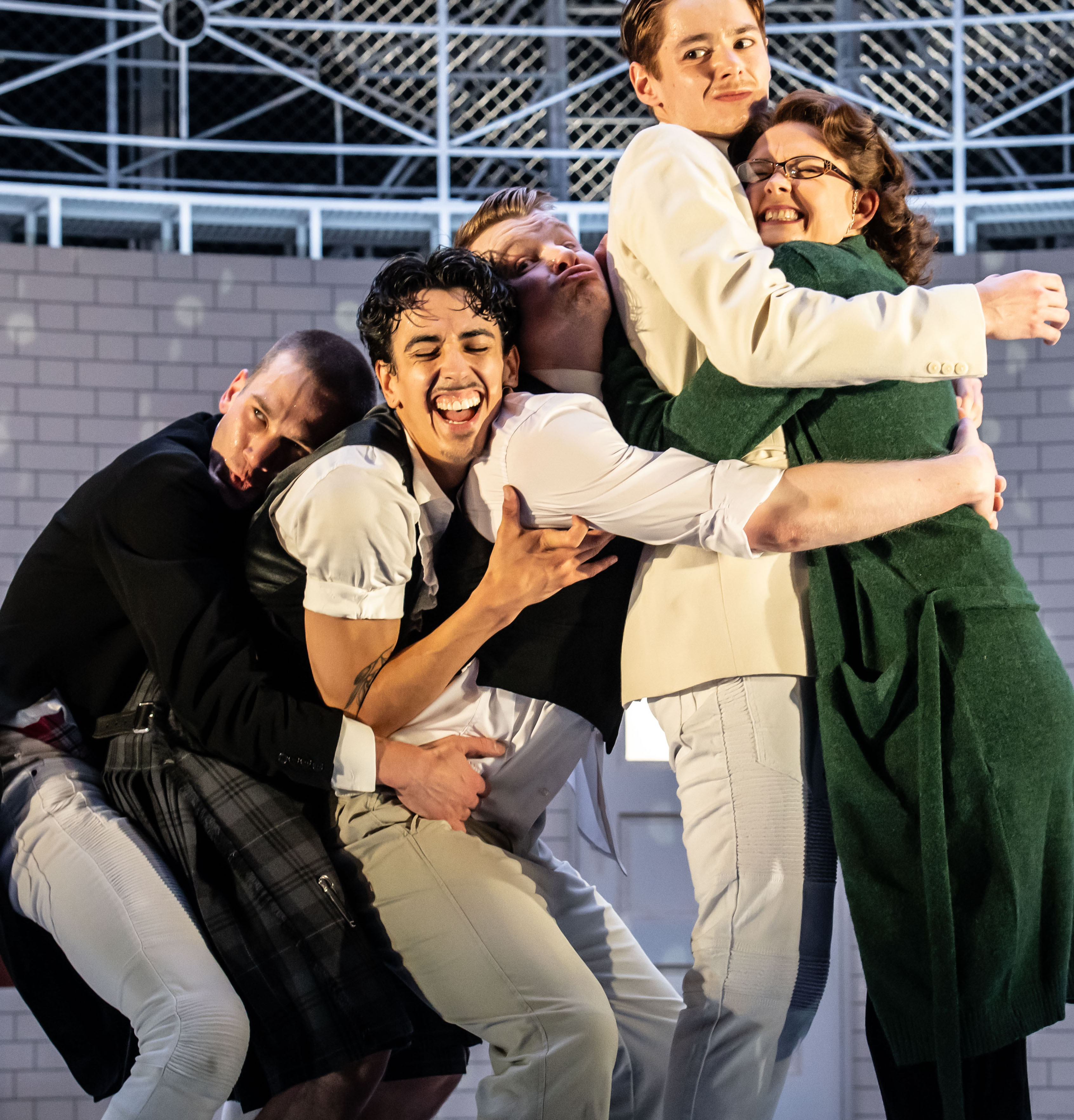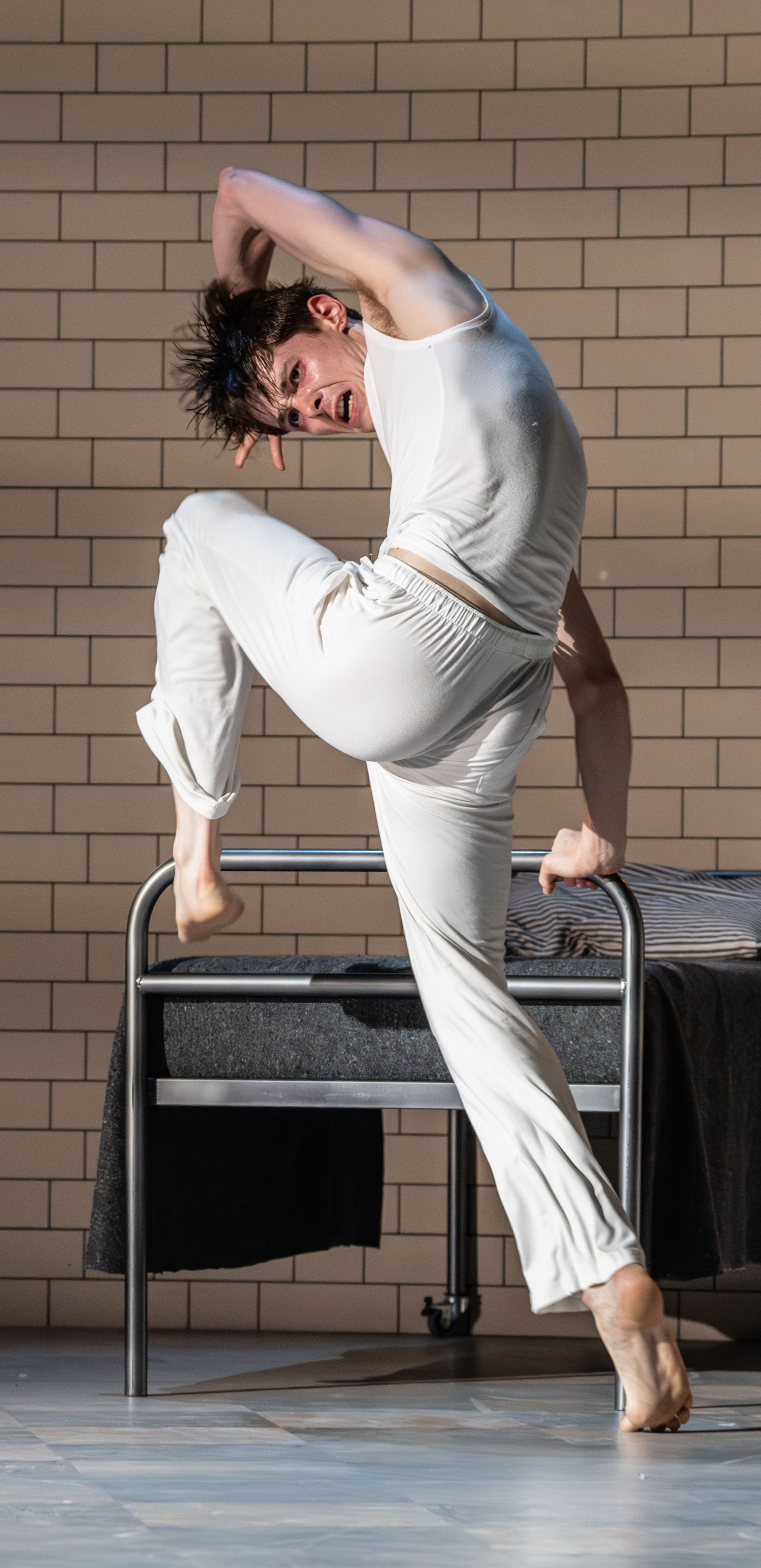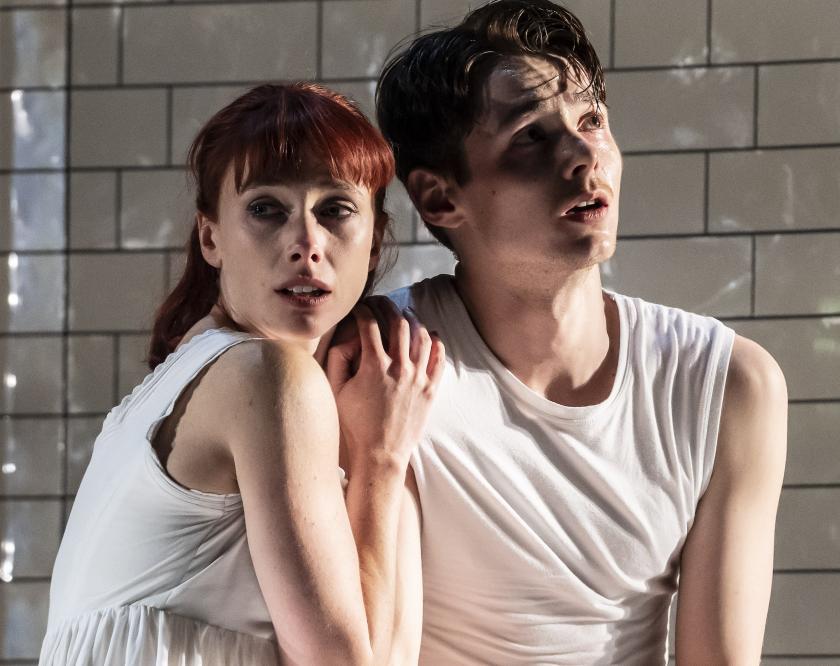Matthew Bourne regularly revamps the first version of a new piece so that by the second go-round it really zings. For the return of his 2019 Romeo + Juliet, though, very little has changed, yet it feels refreshed.
Dramaturgically, it’s still a bit unwieldy. Bourne’s lovers are inmates at the Verona Institute, some kind of correctional facility in “the not too distant future”. Unlike the other incarcerated waifs, Romeo has well-heeled parents (his father is Senator Montague), and they have placed him there, we don’t know exactly why. They can also extricate him at will, we discover, when Bourne's new plotline demands the lovers be parted.
In the institute, the couple are separated only by a dormitory wall and a social class. No gangs, no tribes: the divide here is between the powerless inmates and those in authority, the nurses with clipboards and the bully-boy guards, one of whom is sexually abusing Juliet (Cordelia Braithwaite on opening night). Their boss is Tybalt (Danny Reubens), not a Capulet cousin and an even angrier person than usual. The heightening of the pair’s romance by the usual threat of permanent separation doesn’t get to apply here, so Bourne has to engineer another way to nudge the plot along. Both lovers die, as we see from the opening tableau of their bodies on a morgue slab, but how they arrived there is not at all by the standard route.
No virginal ingenue, Juliet veers from vulnerable to fierce, her red hair a pop of colour against Lez Brotherston’s austere white-tiled set, while Romeo (Paris Kirkpatrick, pictured below right) is an endearing type, despite being a posh boy who arrives at the institute in suit and school tie. The Boys cutely strip away this formal attire and dress him in the whites of the facility. He shows signs of having Tourette’s syndrome, though his symptoms don’t recur after his first scene, and you wonder whether he has been faking them to anger his parents.
Inside the institute he has not just Mercutio (a kilted Ben Brown), Benvolio (Euan Garrett) and Mercutio’s boyfriend Balthasar (Jackson Fisch) as friends, he’s becomes part of a squad of Boys and Girls, heartwarmingly united in their resistance to those in authority. Juliet, for her part, has a particular friend known as “Frenchie” (Anya Ferdinand).
 As R&Js and its variants typically do, this one has a dance scene, where the inmates dress up in their best clothes and couple up for some in-hold ballroom moves. But when the guards leave them alone, they turn the lights down and things get more down and dirty, in the midst of which the lovers suddenly come nose to nose, lit by a glitterball installed for the dance by the friendly chaplain, the Reverend Bernadette Laurence (Daisy May Kemp, pictured left). At another point, just their faces are lit, looming out of the gloom, a superb dramatic touch (the excellent lightning is predictably by Paule Constable).
As R&Js and its variants typically do, this one has a dance scene, where the inmates dress up in their best clothes and couple up for some in-hold ballroom moves. But when the guards leave them alone, they turn the lights down and things get more down and dirty, in the midst of which the lovers suddenly come nose to nose, lit by a glitterball installed for the dance by the friendly chaplain, the Reverend Bernadette Laurence (Daisy May Kemp, pictured left). At another point, just their faces are lit, looming out of the gloom, a superb dramatic touch (the excellent lightning is predictably by Paule Constable).
The duets Bourne gives the lovers are some of his finest, especially the one involving their first kiss. No tentative peck, it’s sustained through a series of rolling and writhing moves on the floor as if their heads had been superglued together, and continues up and over the walkway that spans the top of the set. The two of them appear weightless much of the time, Juliet soaring as if airborne in the lifts, or sitting on Romeo’s shoulders as he runs along, and both at one point being carried off by the other inmates as if floating in water. They arch yearningly, drop to the floor in clinches. In a reverse of the Macmillan choreography, she duets briefly with his corpse.
By contrast, Bourne gives the massed ensemble energetic but more earthbound moves, with his usual inventive twists. There’s a distinctive march style with a momentary pause-and-jerk in it that gives the steps a robotic feel; a looser “rag doll” movement where the inmates sway from one leg to the other, keeping the other leg extended at the same angle; and an aggressive move where they raise their arms as if swimming butterfly stroke, then thrash them up and down. It’s a piece that is in perpetual motion, which gives it a desperate emotional momentum.
 Knitting it all together is a “reimagining” of the Prokofiev score for 16 multi-instrumentalists by Terry Davies, which can be disconcerting for those who know where a particular theme is used in the Macmillan version: the now popular Capulet ball music predictably turns up early, as the second main theme (why not, it’s a stomping great theme), before returning for the actual dance scene, while the quicksilver fencing-fight music finds itself deployed in various scenes to denote frantic scurrying, as when Frenchie tries to find Juliet after she has been sequestered by the abusing guard. But this restitching works, and the "reimagined" orchestration, using saxes and a vibraphone alongside the usual strings and wind instruments, is astutely done. Prokofiev’s mastery has not been eclipsed.
Knitting it all together is a “reimagining” of the Prokofiev score for 16 multi-instrumentalists by Terry Davies, which can be disconcerting for those who know where a particular theme is used in the Macmillan version: the now popular Capulet ball music predictably turns up early, as the second main theme (why not, it’s a stomping great theme), before returning for the actual dance scene, while the quicksilver fencing-fight music finds itself deployed in various scenes to denote frantic scurrying, as when Frenchie tries to find Juliet after she has been sequestered by the abusing guard. But this restitching works, and the "reimagined" orchestration, using saxes and a vibraphone alongside the usual strings and wind instruments, is astutely done. Prokofiev’s mastery has not been eclipsed.
The main takeaway from this evening, though, is as it should be: a tender story of doomed young love, exhilaratingly performed by a youthful, tireless cast. It’s a “young” evening all round: the forces working against the lovers here are the ones plaguing younger generations now – sexual abuse, bullying, knife crime, homophobia – and many of the dancers telling this story are from the company’s talent development programme, nine of them making their company debut. It’s a wholehearted thumbs-up for the company’s future.














Add comment